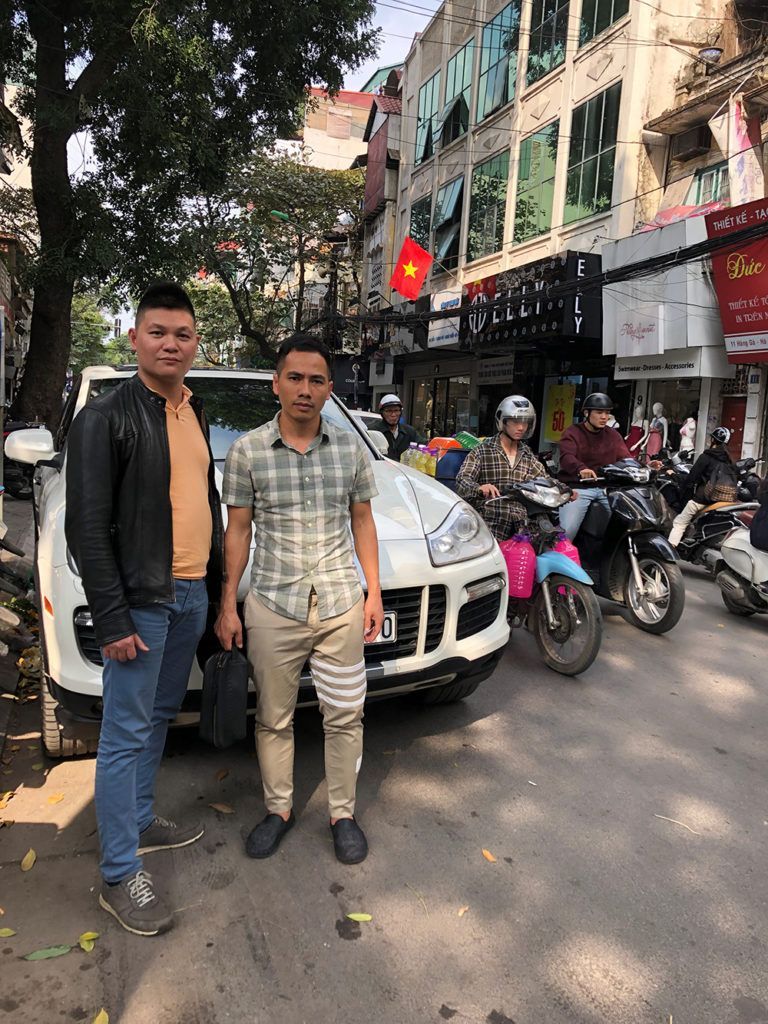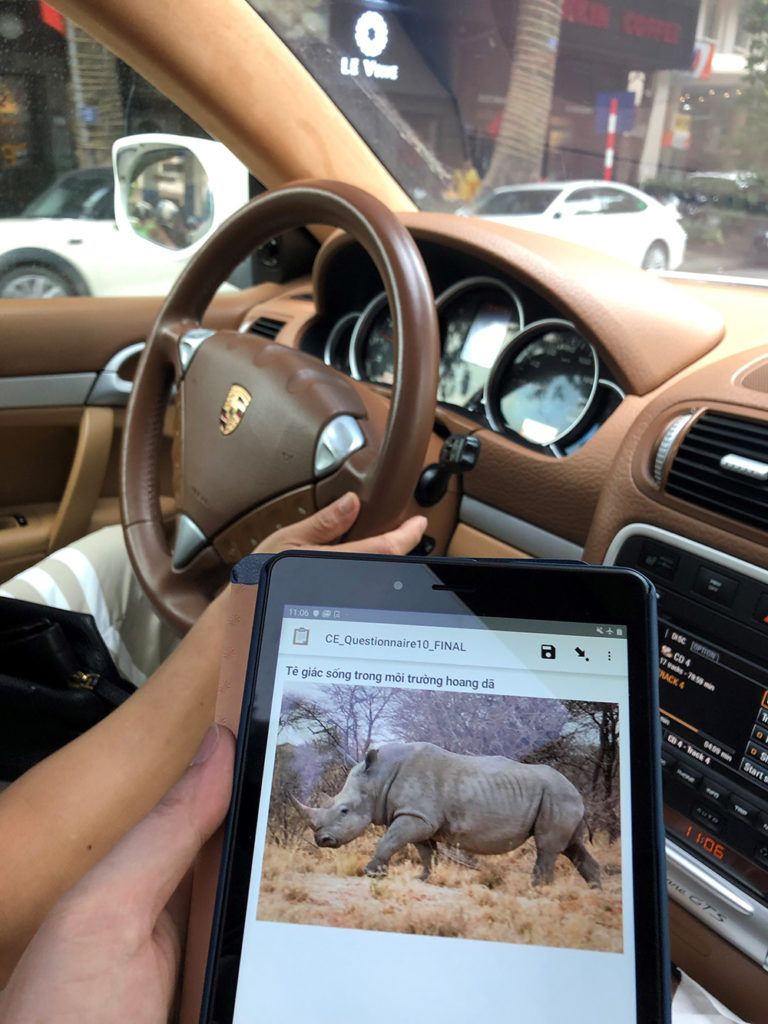Stopping the demand of rhino horn
The last decade has witnessed a rhino poaching crisis. On average almost 1,000 rhinos were being killed every year. Why? Most rhino horn is taken to Asia, but the reasons people demand rhino horn are complex. Horn has historically been used in Traditional Chinese Medicine but recent years have seen a shift in behaviour and it’s now increasingly being used as a symbol of wealth and prosperity. To stop the demand, we have to understand why people want it. In order to convince wealthy Asians not to use rhino horn, we need to work out what is motivating them to do so.

Consumers using rhino horn in Vietnam.
So we’re supporting Nam’s research in Vietnam which is doing just that. He and his team are working hard to conduct a unique survey which is proving very challenging. Most rhino horn users are rich and in senior positions in society. They are also aware of the illegal nature of the rhino horn trade and consumption. Understanding their motivations is even more challenging because they don’t want to spend time talking to some young researcher someone they don’t trust or like. Fortunately, Nam has networks with some of the participants. He’s a member of some sports clubs which gives him access to the people he wants to talk to. And many of his neighbours are wealthy individuals. Nam is building a network of key informants who themselves have good connections with other, potential respondents. Without these connections, it is impossible to interview rhino horn users.
Interviews can be challenging
And speaking to these individuals takes time and consideration. He often conducts interviews in places that are convenient for them, such as their houses, restaurants, coffee shops or sports clubs. To undertake a 20-minute interview might take him the whole morning or afternoon. He cannot expect to walk in and start bombarding them with questions. It takes skill and charm to get to that stage. Sometimes they show him around their hotel or restaurant, and they almost always have long conversations about many other topics before sitting down for the interview.
Nam uses every strategy he can. He even borrowed a fancy Porsche from a close friend, who has very good connections with the super-rich in Hanoi. It is all about relationships and networking. He must have something of interest to them so that they want to spend time talking to him. Studying the rich is always more difficult than studying the poor as they are not motivated by small gifts. Consequently the current narrative around rhino horn consumption is rather misleading, which means conservation organisations do not have reliable insights from which to build their campaigns. Nam’s approach will elicit some really interesting and useful information which will then help us address the real reasons why people are intent on continuing to demand rhino horn, and, hopefully, put a stop to them.
Learn more about rhino horn use in Vietnam and Nam’s project we’re funding to protect rhinos:


